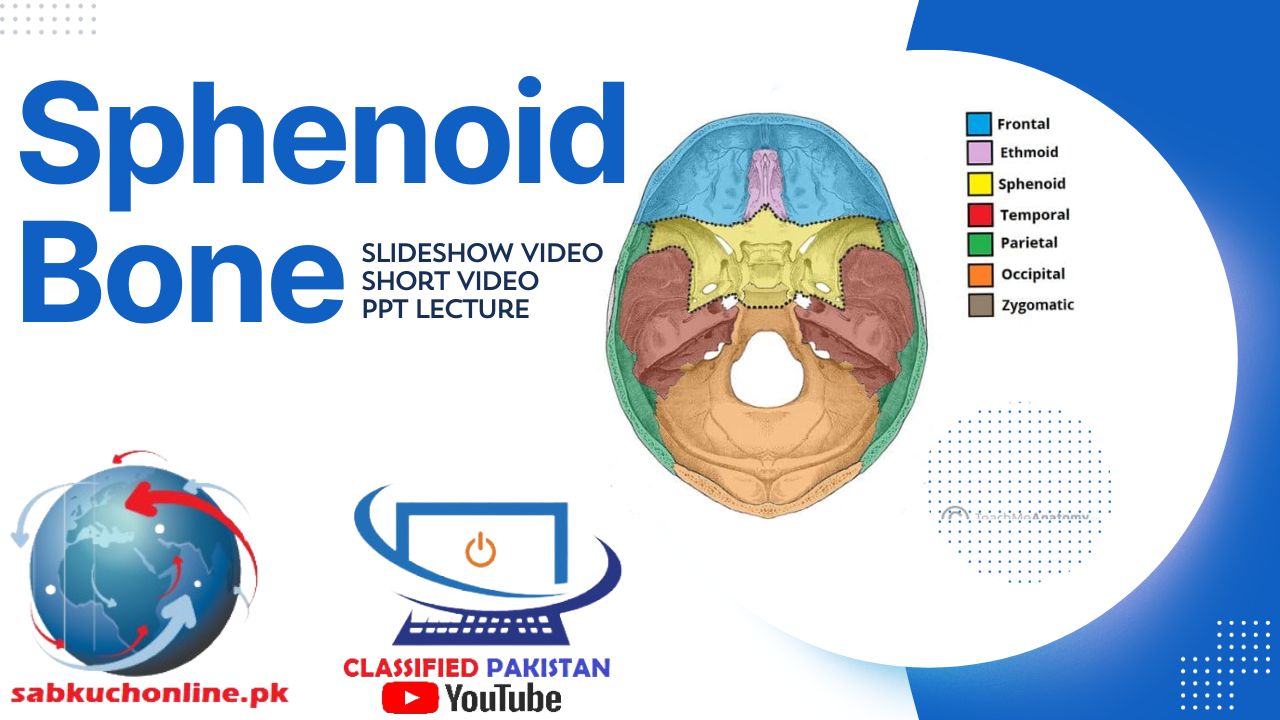The sphenoid bone is a complex cranial bone located at the base of the skull, within the central region. It has a distinctive shape and several important features. Here’s an overview of the sphenoid bone:
- Body: The body of the sphenoid bone is located at the front and is shaped somewhat like a butterfly or a bat with its wings spread. This central part houses the sphenoidal sinuses.
- Greater Wings: The greater wings are two large, flat, and triangular processes that extend laterally from the body of the sphenoid bone. They help form the middle cranial fossa and provide attachment points for various head and neck muscles.
- Lesser Wings: The lesser wings are two smaller, more superiorly positioned processes that form the posterior part of the orbit (eye socket) and contribute to the anterior cranial fossa. The optic canal, a passageway for the optic nerve, is located within the lesser wing.
- Sella Turcica: The sella turcica is a saddle-shaped depression within the body of the sphenoid bone. It contains the pituitary gland (hypophysis), making it a vital anatomical feature for the endocrine system.
- Foramen Rotundum: This is a round opening located in the sphenoid bone. It serves as a passageway for the maxillary nerve, a branch of the trigeminal nerve.
- Foramen Ovale: The foramen ovale is another opening in the sphenoid bone that allows the passage of the mandibular nerve, also a branch of the trigeminal nerve.
- Foramen Spinosum: This small opening transmits the middle meningeal artery, an important blood vessel associated with the meninges and the covering of the brain.
- Pterygoid Processes: The pterygoid processes are two processes that extend inferiorly from the body of the sphenoid bone. They are involved in the attachment of the pterygoid muscles, which play a role in jaw movement.
The sphenoid bone is often referred to as the “keystone” of the cranial bones because it connects with many other cranial bones and plays a central role in maintaining the structural integrity of the skull. It also houses important structures such as the pituitary gland, optic nerve, and several major blood vessels and nerves.
